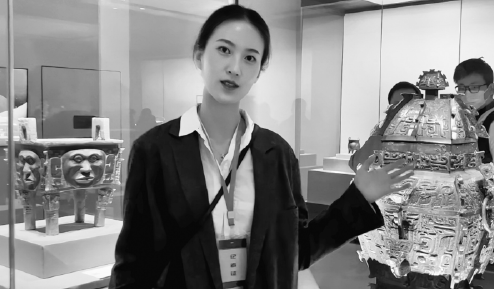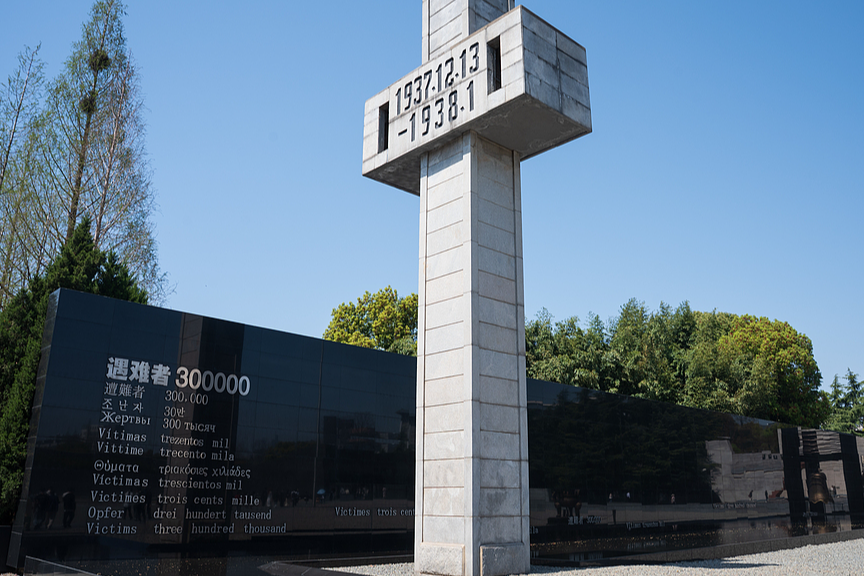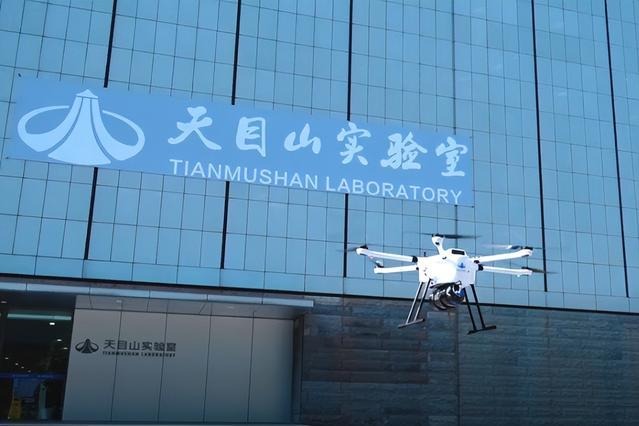Short videos bring past to life
Vlogger's storytelling spurs interest in nation's museums, Yang Feiyue reports.

An ambience of mystery sets in as Wang Yini starts a video recording of her exploration of a museum in Baoji, Shaanxi province.
She enters a tunnel 24 meters below ground at the facility, which preserves the mausoleum of the wife of Li Maozhen, ruler of the Qi State during the Five Dynasties and Ten Kingdoms (907-960) period.
It doesn't take long before Wang, who is in her 20s, reaches a wall of chunks of stone blocking the way.
"It is the entrance of the tomb, easily three floors high, and it was built in a very unconventional way," says Wang, who's originally from Jilin province.
"There is no horizontal beam at the top, so if you remove any one of the stones, the wall will collapse in one split second and fall on you," she says, adding that the goal was to ward off grave robbers.
Wang points out the ancient defensive mechanism's shortcoming — it only works once. She turns around and takes viewers back on a route dug by the archaeologists to the other side of the wall.
She then reveals a second trap: two more stone doors embedded behind the wall.
"There are no hinges, so they can't be rotated, providing another layer of security," she says.
The short video has received about 1.3 million thumbs-up from users of the short-video platform Douyin. It is one of the most popular videos by Wang, who is widely known by her fans as Shui Xing, or Mercury.
Over the past three years, Wang has taken her more than 3.6 million followers on virtual trips to museums and historic sites around the nation, including the Mogao Grottoes, which hold a trove of ancient Buddhist art in Gansu province, and the Sanxingdui archaeological site of Bronze Age culture in Sichuan province.
Wang started to try her hand at making videos to popularize archaeology in 2020. She says she was driven by her discovery that many people have mistaken ideas about the field, as well as her own lifelong interest and academic qualifications.
She once heard a mother give incorrect information to her young son about the "afterglow-style "Caifeng Mingqi seven-stringed guqin, an ancient Chinese zither, from the Tang Dynasty (618-907), part of the permanent collection of the Zhejiang Provincial Museum.
With a coating of vermilion lacquer, the long zither took its lyrical name from comparisons to the changing glow of the sunset and the cry of a mythological phoenix.
"The guqin is placed upright, and the mother tells him it's called a harp," she says.
"At that moment, I realized that many people visiting museums might be unaware of the historical backgrounds and uses of different cultural relics. That's why it's important to share the historical and cultural knowledge of each place with everyone," she adds.
Love of history has predisposed Wang to archaeology since childhood, when her parents would take her to local museums. Wang says she was fascinated to feel time and space overlapping at those locations.
She then studied cultural relics and museology at the Minzu University of China in Beijing from 2013-17 and went on to finish her doctorate in exhibition planning and public archaeology at Zhejiang University in Zhejiang province.
"Archaeology has different divisions. There is field archaeology and then artifact organization and research," Wang explains. "What we do is to show cultural relics and promote them among the public."
Through her videos, many young people have been exposed to relics that are important touchstones of Chinese culture.
"I am in the habit of visiting museums and viewing exhibitions on a weekly basis," Wang says, adding that she loves to connect with items from the past.
"Words are not required. You just need to feel, understand and restore them," she says.
She also has become a faculty member at Liaoning University, serving as a lecturer on courses related to museum studies.
"In the process of academic research and regular museum visits, I have discovered the wonderful joy of encountering millennia-old civilizations and the sense of accomplishment in revitalizing 'dusty' history," Wang says.
Her expertise in the field gives her the ability to stick to rigorous academic research methods. Even for a video of just a few minutes, she will spend two to three days consulting professional books and papers and writing the script.
However, her meticulously crafted videos didn't generate much attention online at the beginning.
In retrospect, she says that at first, she didn't choose topics that would captivate the audience's interest.
"I fell into the trap of focusing too much on using beautiful language without telling a compelling story," she says.
After experimenting with different angles of reporting, Wang found a way to deliver engaging stories that tugged at the audience's heartstrings.
"The key is to attract the attention of online users with interesting storylines or suspense, and then gradually delve into deeper perspectives," Wang says. "This makes it easier for viewers to absorb the content."
In one of her videos about anti-theft measures for tombs, Wang tells a fascinating story of a tomb owner's battle of wits with tomb raiders who were anticipated after death.
The video garnered millions of views on Douyin and earned her more than 300,000 new followers overnight.
As she has gained experience, Wang has not confined her work to cultural relics. She also has branched out to touring museums dedicated to different subjects and somewhat off the beaten track.
In 2021, Wang made her way to Shanghai's Black Museum, where an exhibition on depression and other mental problems was held.
"It was the one, of all the museums I had been to, that shook me to my core the most," Wang recalls.
She explained various devices that demonstrated the internal world of the patients while sharing her feelings of the tour every step of the way.
Many of her followers left comments about how they better understood depression.
"It surprised me that some patients with depression also told their own experiences in the messages and addressed the prejudices (against them)," Wang says.
She was particularly impressed by a college student who was admitted to a good university after having to quit high school for two years for treatment.
"These individuals who have emerged from depression may bring encouragement and hope to other patients by sharing their own experiences," she says.
Last year, Wang's two videos about submarine museums in Shanghai shed light on structures and functions of submarines and enabled the online community to better appreciate the challenging environment and harsh conditions faced by submariners.
Wang says she has also noticed how museums have been striving in recent years to make obscure and profound historical knowledge interesting and relatable.
"Museums have undergone significant transformation, and many official institutions are using fresh and lively formats, as well as the latest technological means, to make cultural relics more accessible to the audience," Wang says.
An increasing number of museums have developed short videos, stage performances and recreational programs to showcase what they have to offer and draw more public attention, she says.
Many lesser-known museums have become hot spots for young visitors through those efforts.
On May 18, which marked the 47th International Museum Day, the total number of views for museum-related videos on Douyin in the past year reached 51.34 billion, which is equivalent to 66 times the annual visitor count of all museums nationwide, according to the 2023 museum data report released by Douyin.
Most of the nation's museums are in first- and second-tier cities, especially capital cities, says Liu Wanming, deputy director of the National Museum of China.
It makes it harder for residents living in relatively remote areas to enjoy related cultural services.
The emergence of Wang and other museum video bloggers, or vloggers, has helped to break the geographical boundaries and bring museums closer to people nationwide.
To date, the most popular museums on the Chinese mainland include the Palace Museum, the former imperial residence in Beijing; Emperor Qinshihuang's Mausoleum Site Museum, home of the Terracotta Warriors in Shaanxi province; and the National Museum of China in Beijing, according to the Douyin report.
Wang says online tours are a good complement to in-person attendance and often boost such visits.
"It can ultimately help generate genuine pride and interest among a broader audience in museums and the rich historical and cultural heritage of the Chinese nation," she says.



Today's Top News
- China holds national memorial for Nanjing Massacre victims
- New plan will be a road map for a stronger future
- Taiwan's character of the year a vote against confrontation
- Strengthened resilience key for economy
- Video sheds new light on Japan's wartime atrocities
- Xi: World yearns for peace, trust more than ever






























